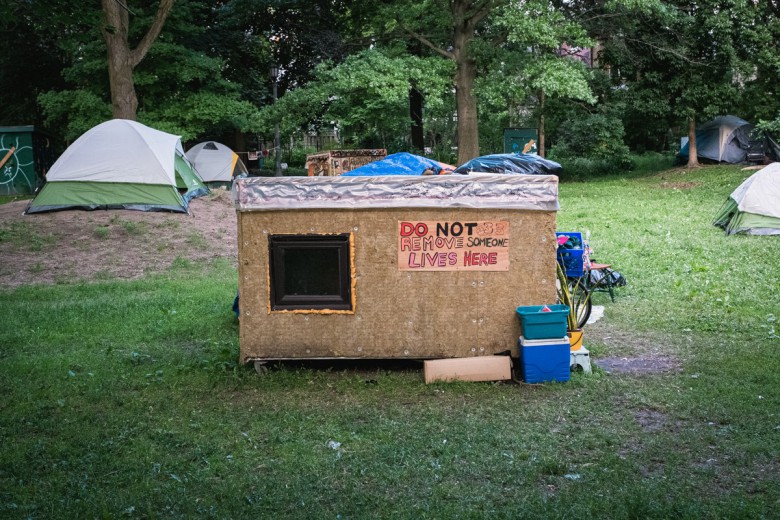
As speculators have been saying for years, Saskatchewan is the new Alberta. With the province now leading the country in economic growth and predicted to do so through at least 2013, the moment has definitively arrived. “We don’t use the word boom, because it is immediately followed by that other word,” said conservative Premier Brad Wall shortly after ousting the long-standing NDP government in 2007.
Whether it’s spoken or not, the boom has been a bust for many, with a soaring cost of living and growing housing crisis. As Rachel Penner de Waal describes in this issue, the “amazing opportunities” vaunted by Saskatchewan’s enterprise minister exist for an increasingly select few. Still, promises of unbridled opportunity and fast fortunes have breathed renewed life into old constructs of the “Last Best West,” spurring a new wave of westward migration. Census numbers released in February by Statistics Canada indicate that after decades of sustained decline, Saskatchewan’s population has topped one million residents for the first time since 1986. It’s just “another development in a remarkable comeback story,” claims Premier Wall.
The Prairies have in many respects always remained a distinctly frontier society, though its borders have changed shape and multiplied. When the North-West Mounted Police was established here in 1873, it was intended as a temporary institution to be phased out once the nascent Canadian state had established sovereignty over its western hinterlands and progressed beyond the frontier stage of its history. But the task of confining the Prairies’ Indigenous population to reserves and securing territory for settlement expansion soon proved considerably more difficult than anticipated. Rather than disbanding the civilian paramilitary it was instead expanded into the Royal Canadian Mounted Police, which remains today as a permanent national paramilitary force, fulfilling much the same role of repressing resistance to the ongoing and incomplete colonial project.
No longer strictly confined to reserves, Indigenous people in the Prairies are increasingly forced into the slums of de facto segregated cities like Winnipeg, Saskatoon, or Regina in search of work and housing, where they are over-policed and over-incarcerated at rates that are among the highest in the world. Prairie cities have a higher Aboriginal population per capita than anywhere else in Canada, as do their prisons and foster homes.
In Briarpatch’s hometown of Regina, where Indigenous people are pushed quite literally to the “wrong side” of the train tracks, upwards of 80 per cent of Aboriginal households live in poverty. Racism here is of a more honest and brutal nature, stripped to its barest component parts in a way that unnervingly mirrors the stark austerity of the surrounding landscape. Saskatchewan is, after all, the home of the “starlight tour,” a strangely celestial term for picking up young, Indigenous men in police cruisers and abandoning them on the edge of town in the dead of a Prairie winter. In the lead-up to a 2003 inquiry into the death of Cree teenager Neil Stonechild, whose frozen body was found in a remote field on the outskirts of Saskatoon in 1990, then-Police Chief Russell Sabo admitted that the practice was nothing new, with the first recorded case dating back as early as 1976.
But it’s not just lawmen and women who police these boundaries, old and new. One needn’t look further than the drowning of Daryl Johns in Regina’s Wascana Lake last summer for a harsh reminder of that fact. The calls for help of Johns’ distraught friend, also Indigenous, were ignored for half an hour by those out for a stroll on the hot and busy afternoon in the park. It took an Indigenous woman, Lani Elliot, to finally answer his pleas to phone 911. “My question is this,” she asked city residents: “If he had been clean-shaven, if he had been well-dressed, if he had been non-Aboriginal and he had come up to them and said, ‘My friend just went under in the water,’ would they have believed him then?”
Those living on Prairie reserves contend with battlegrounds of a different sort. As Melina Laboucan-Massimo makes clear in this issue’s photo essay on the struggle against oil and gas development on unceded Lubicon territory in northern Alberta, centuries-old efforts to wrest land from its original inhabitants for resource extraction are by no means over. Elle-Máijá Tailfeathers testifies to similar encroachments by the oil and gas industry, and to the community’s resistance, in her article on hydrofracking on the Blood reserve.
As André Magnan and Melanie Sommerville write in the cover story of this issue, it’s not only the Prairies’ subsurface resources that investors are staking claim to. At a time of skyrocketing food prices, climate-related instability, and economic crisis, Saskatchewan farmland is fast becoming a star commodity and the target of a 21st-century land rush by global speculators.
With the country’s largest reserves of oil, natural gas, uranium, and potash, much of which is found on Indigenous land, the Prairies will continue to be at the front lines of capitalist expansion for years to come, and are poised to become a hub of resistance. It’s time for us to imagine the West as a different kind of “land of opportunity.”




_780_520_90_s_c1.jpg)

